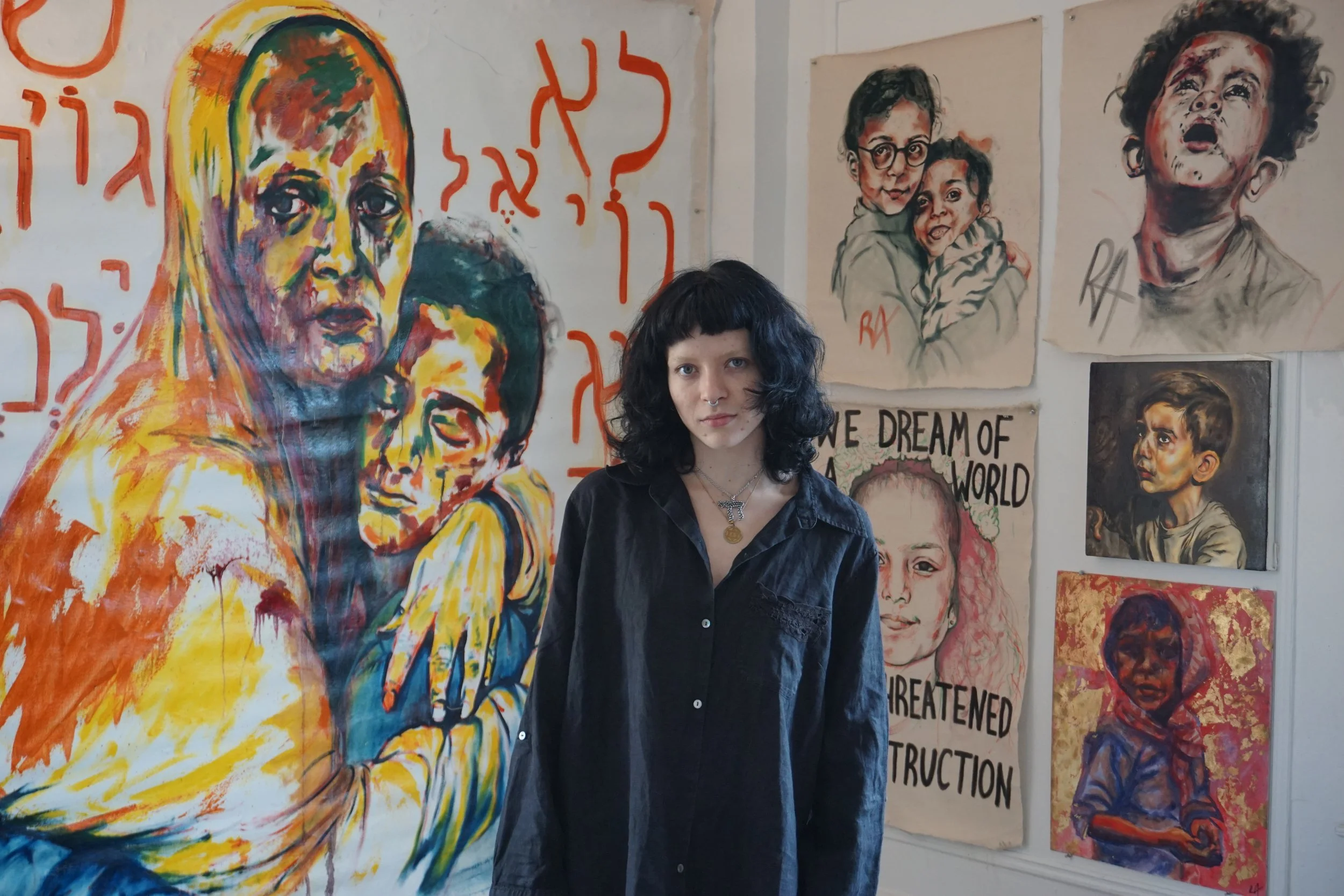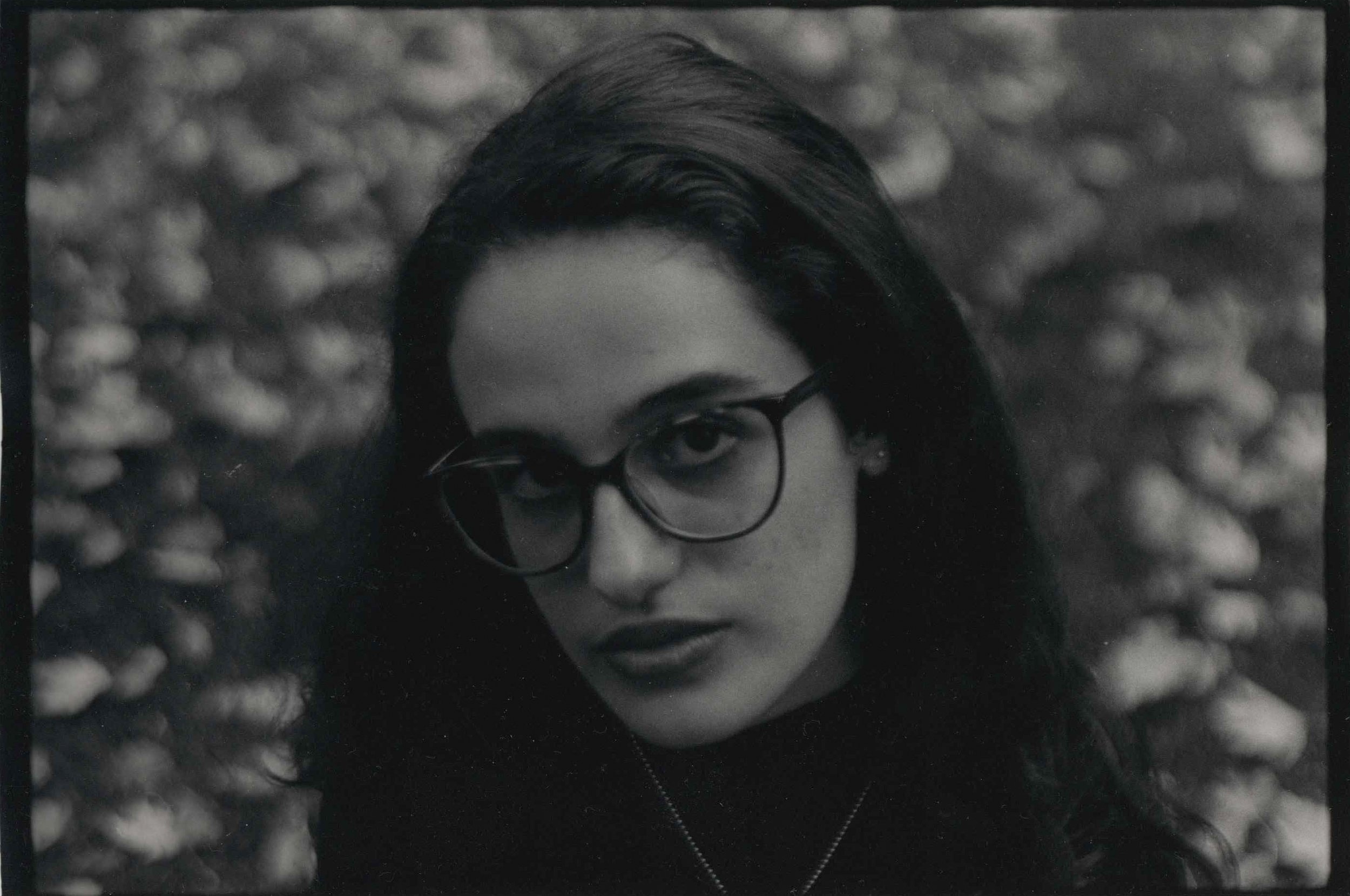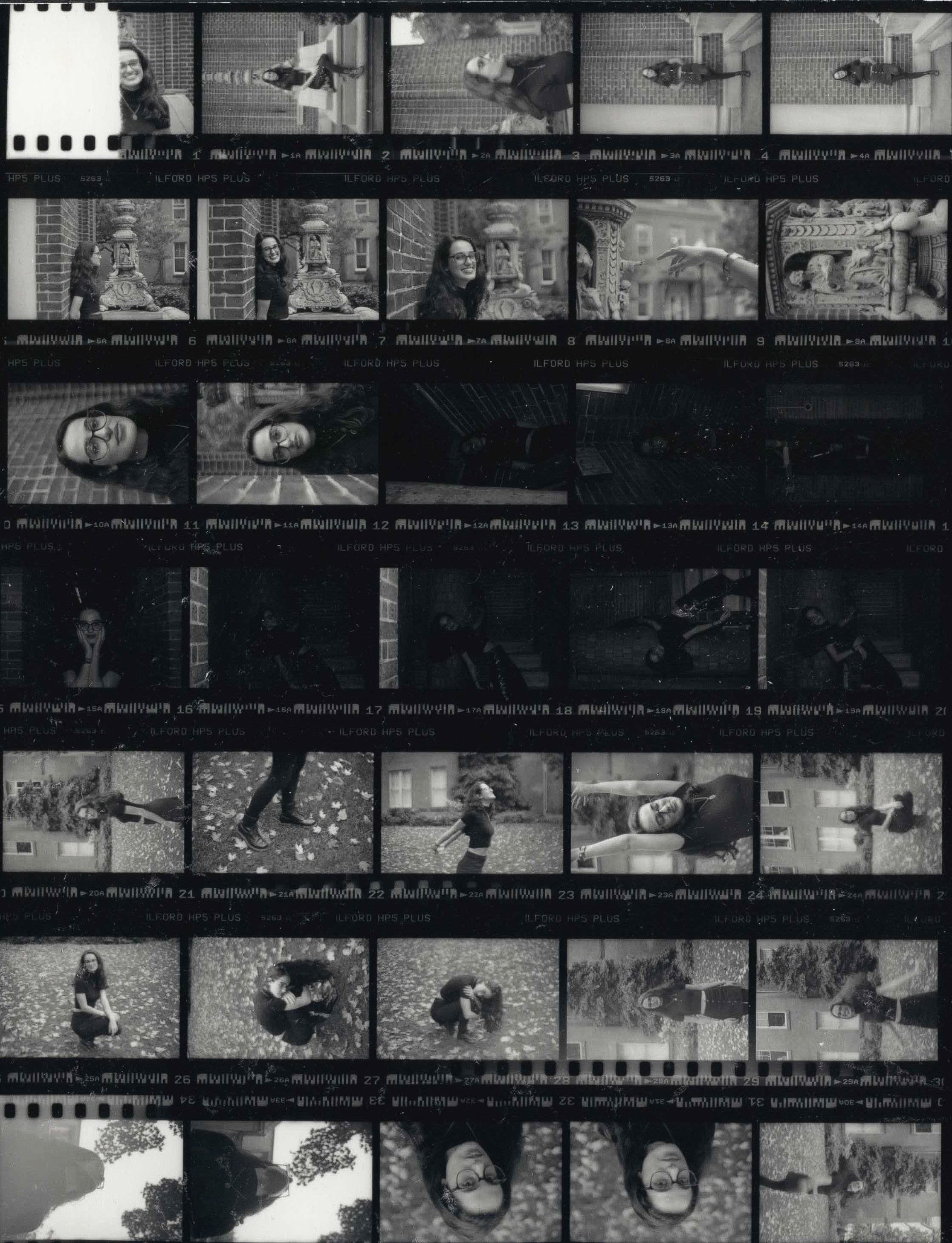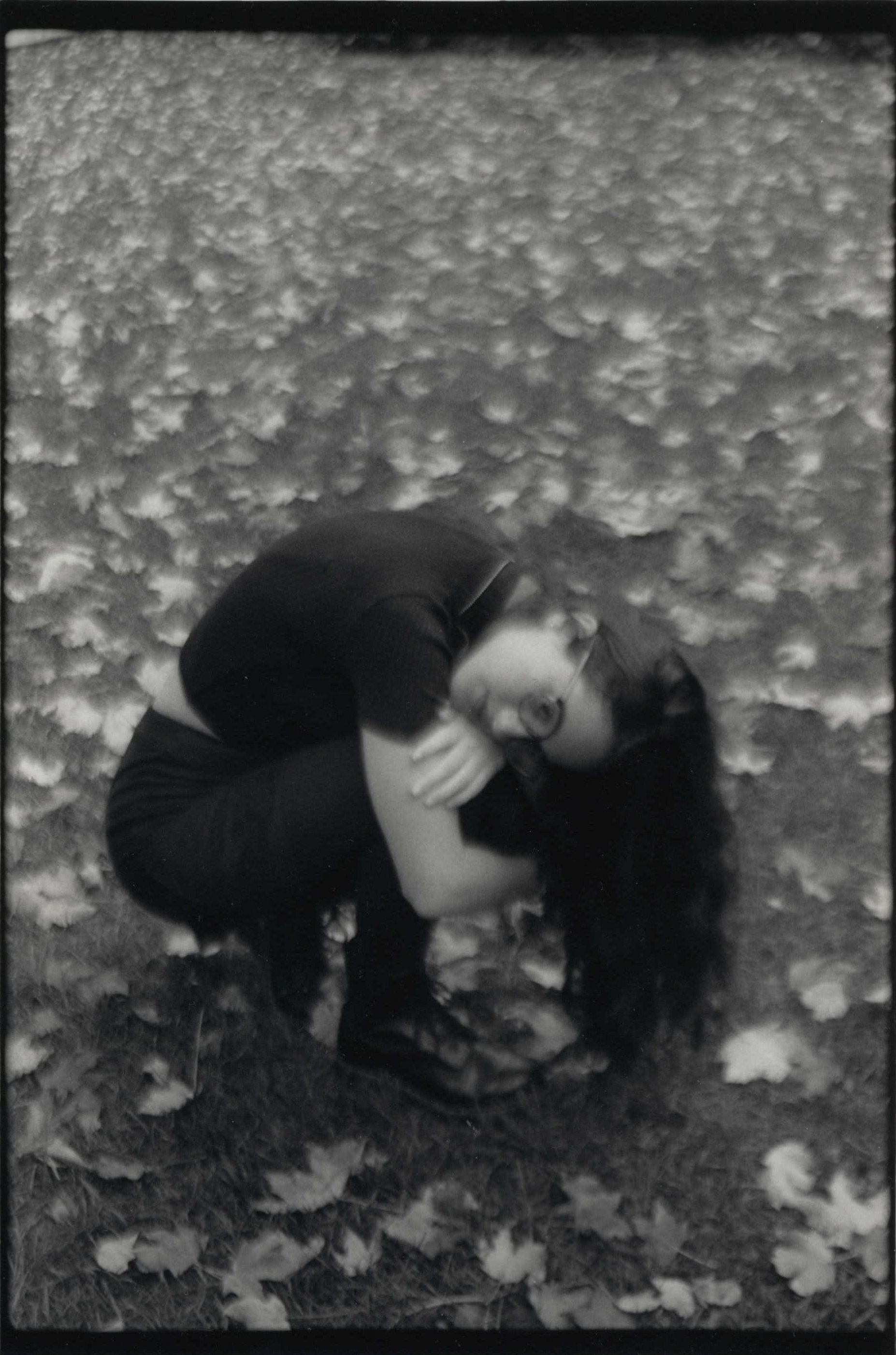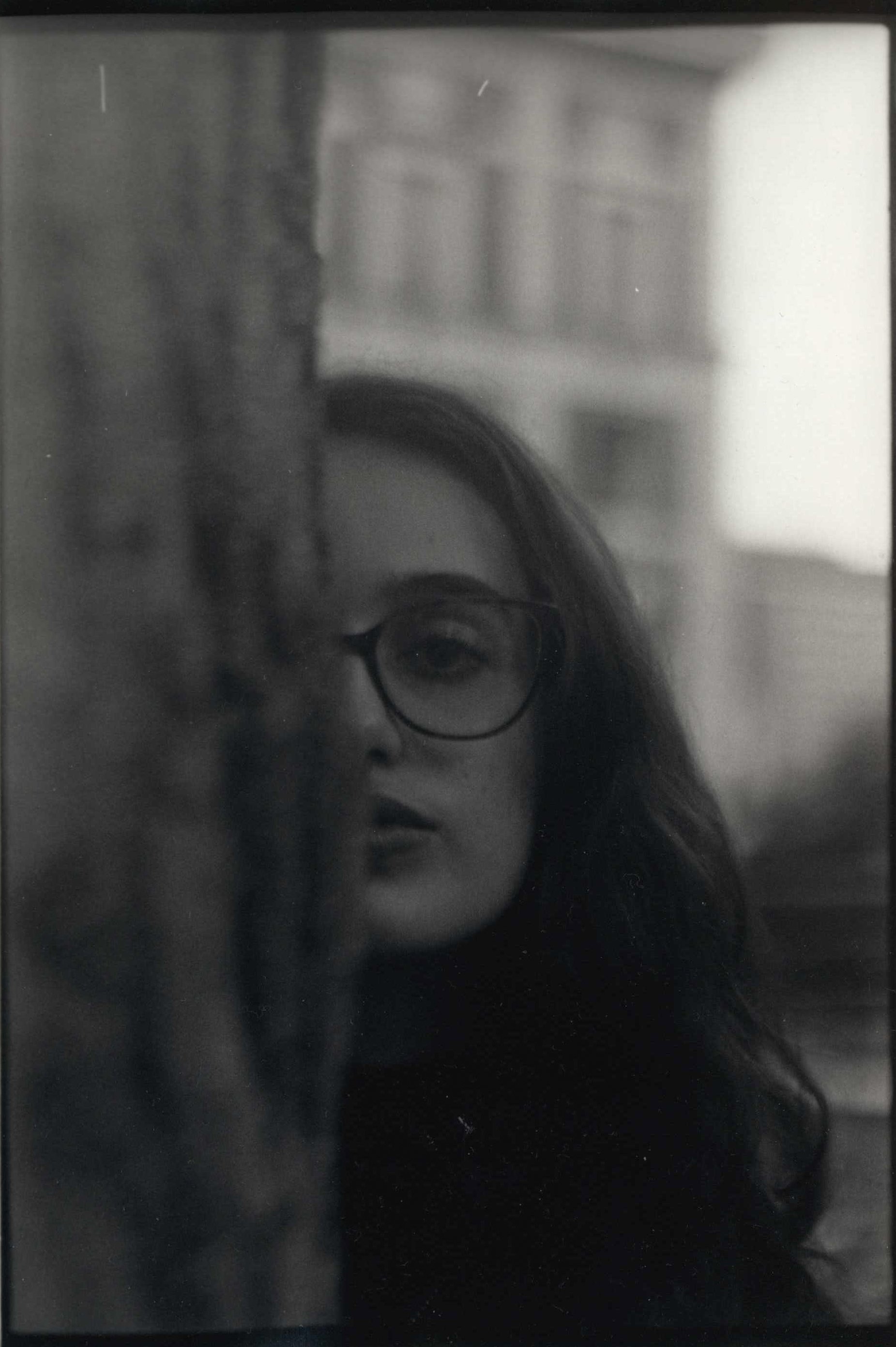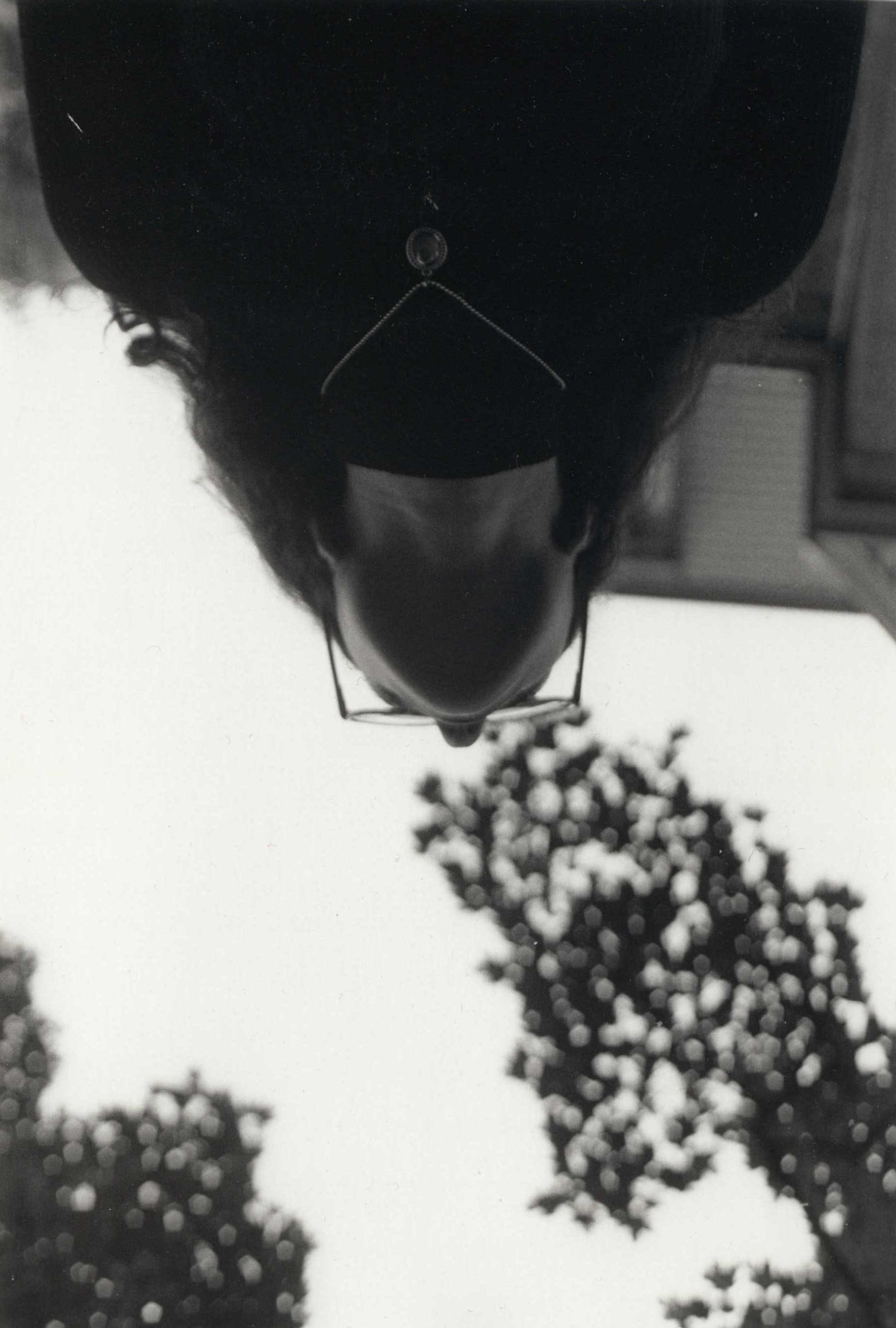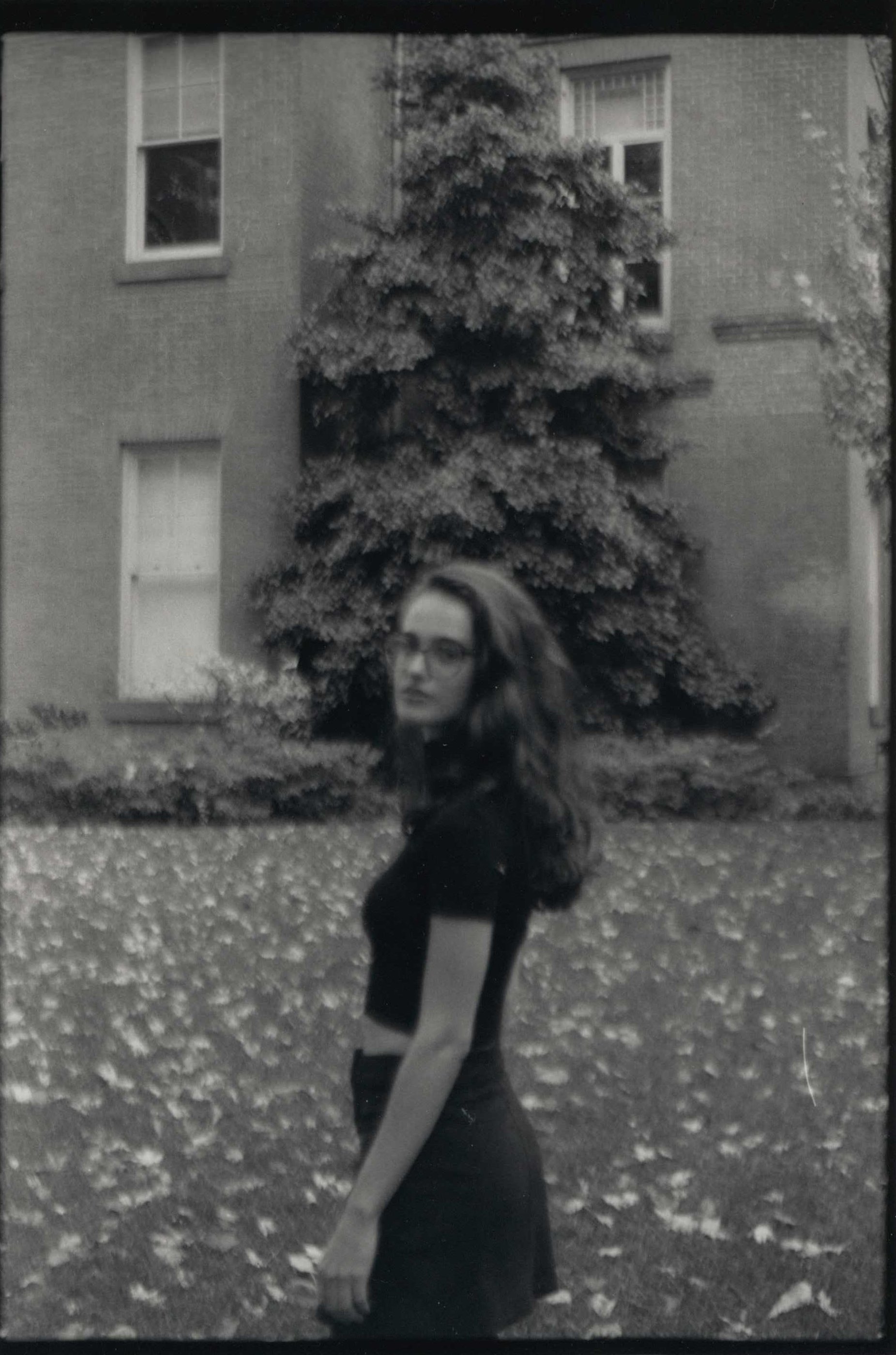Feature by Mara Toma
Photos by Jane Mok
Julia (she/her) is a senior at Barnard studying comparative literature. She had arrived earlier than I had at Cafe Amrita, having settled herself at a receded outdoor table. Much like our conversation, this choice of seating enjoyed some form of serendipity: the loud honks of transiting trucks were not mere background noises but rather a selection of well-timed intermissions (necessary for aimless laughter, tangential conversation, even a little bit of uncertainty). After setting my bag down, Julia handed me a folder with some of her works. Maybe it was then, seeing her work not as a whole but also as details in between, that I understood her art as a need to capture a beauty complicated by the fleeting present. Her art boldly seeks that kind of beauty, navigating and modeling its interactions with fate, time, heartbreak, gaze, and love.
Mara Toma – What got you into collaging?
Julia Tolda — I went to very hippie schools until the 8th grade. A lot of our projects consisted of collaging so it has always been a big part of my art. In high school, I used to make pinterest boards and curate my Tumblr and Instagram. I got into collaging as it is now over the summer of 2021. I took a class called Francophone studies, and I really didn’t want to do anything for the final project. I talked to the professor and asked whether I could write two poems instead. She agreed under the condition that I also do something else. I told her that I do collage as well. I lied—I didn’t collage at all back then. But I did it! And it was so much fun. The first time I collaged it took me three hours and then after that for another class I did another poetry and collage, and it took me less time as I got better at it. All of those things led me to collaging, but it was a slow burn…
MT—Why collage?
JT– Some things are best captured by other people. I'm not a photographer but I have a good eye for design, curation, and putting things together. I like collaging because it helps me process things that exist in the world and put them together in a way that makes most sense to me—as opposed to going out and photographing or painting. It's a way to take up space that I find really intriguing. It’s bizarre because I'm using other people's work to create something that's mine, but isn't that all art?
Maybe the next life
MT– I love how you mention using people’s work to create something that is yours. Collage is a cyclical process of decontextualization and recontextualization of images. How does this process appear in your work?
JT—- I decontextualize and recontextualize things very often. I mostly undo the work that other people have done to create new meaning because it’s easier—it’s easier to make something new. I can do whatever I want when I take it out of context. In Still Your Girl, for example, I used a photograph from a Christian Dior ad for an opening sale. The ad features all these models who are sitting and wearing white and I just thought it would be so much more beautiful if I made them into little ghosts like the ones on Phoebe Bridgers’s Stranger in the Alps cover. I’ve taken it all out of context because none of it is the actual context.
I think about The Idiot by Elif Batuman. The fact that she named her book after The Idiot, Dostoevsky’s The Idiot is so interesting. The entirety of that book is her going through other people's writings and trying to find herself—that's how I feel about art and beauty in the world. Collaging is a way to make sense of what I see in the world to me.
Ghosting
MT— You express yourself through writing as well. How do you think your engagement with different art forms influences your work?
JT: So I'm actually a writer first. I would say that I was a writer before I was a collage artist. I get made fun of by the people around me because I'm a lover of the narrative—I live my life as a little story. I love the plots. I love the characters. I love the symbolism. I’ll bring up a quote from a book that I read because it fits the narrative. Writing is central to me. When I weave the words together, I create something new with what's already there, what already exists.
I'm finding so many similarities between collaging and poetry as I speak. Both use things that exist to create something completely new. With poetry, there is more flexibility because I can choose whatever words I want while with collaging I source from the original materials. I never use copies of magazines— I rip from the magazine and only use what I have. When I’m collaging, there's so much that gets lost in the middle because sometimes I rip things apart, and sometimes they just look ugly, and I have to discard them or use them later. And with poetry, I could erase the whole thing and start over. Whatever word I choose next is completely mine. If I don't like a word—I'll use a synonym. It's really difficult to find a photographic synonym when I'm looking through magazines so I work with what I have. It’s the difference between found material and creation that’s absolutely new.
Here is looking at them
MT– Speaking of your creative process, I think there’s a certain level of serendipity present in both poetry and collaging.
JT: Absolutely, I think serendipity might be the perfect word to describe how I feel about collaging and poetry. I think for both of them there is a stroke of fate. That happens before I start anything. I need to be inspired, I need to be interested, and once it hits, I have to do it.
MT— I want to shift gears a little bit. A lot of your collages evoke a feeling of nostalgia, but not necessarily directed towards something of the past. What is it that you find compelling about the past? What about the present?
JT— In Portuguese, we have this word called saudade. It means a nostalgic longing for something. And the interesting thing about saudade is that you can miss something which is there. It's about missing what’s passed. It's about missing what’s gone, but it's also about a love so strong that it almost breaks your heart. That's how I feel about both the past and the present. I have a love for beauty and I have a love for the moment and I want to crystallize them so bad that I know that it's so impossible and ephemeral that it hurts.
I thought they’d bury our bodies together
MT— The present is also the past, and this idea comes through your work in the way that you blend the two in compositional space.
JT— It is much more heartbreaking to love what is there so much that you want to keep it and know that it's going as you stare. The past and present to me are similar in that way. The feeling of saudade and the feeling of longing never stops. I guess nostalgic is the right word, but I am nostalgic for the present. I am nostalgic for what is here.
MT- Something else that struck me about your collages is that you either totally remove or blur out the eyes of human figures. What’s your relationship with the gaze?
The eyes are the windows to the soul as the saying goes, but the eyes are also the most recognizable part of any face. When I take them out, I make the people anonymous and I make them into whoever you want them to be. In Go Ask Alice, for example, the central figure looks like what I imagined an older Alice from Alice in Wonderland looks like with the blonde hair and features, but keeping her eyes would make her a woman playing Alice and not Alice herself. If I keep faces, they need to mean something. And if I take them out then I'm making them into something new. Looking is power, imagining is power, staring is powerful, and it scares me. It scares me to be vulnerable. It scares me to put my work out there, but I just let it happen.
Go Ask Alice
MT – In many of your works such as Self-titled and I Thought They’d Bury Our Bodies you include elements about yourself. Could you tell me what self-portraiture through college feels like?
JT– When I was in Paris over the summer, I collected a lot of things. I collected museum brochures, ticket stops, and I collected pictures of myself because in Paris it’s very easy to get a photo booth picture of yourself taken. I knew that I wanted to make a self-portrait from the minute I took those pictures. I wouldn't say that I struggle with self-portraiture—I like it so much that it scares me. I tend to be very open and honest—heartbreakingly so. Self-portraiture was the last twist of a knife of vulnerability—of burying myself face first, but The Next Life and I Thought They’d Bury Our Bodies Together are the closest I've ever come to self-portraiture. Self-titled has pictures of me, and it also has lines about being a Sagittarius. There's also Audrey Hepburn in it… I've been told that I look like Audrey Hepburn, though I don't see the resemblance. I guess I’m just a brunette with big eyes.
There is a difference between using other people's faces in my work and my own. If I can't speak for them, because there are characters in my work, and I would rather keep their anonymity..
self-titled
MT– When you put your work out there, what would you like your viewers to be looking for?
JT– The details. I am a detail oriented person. I love the big picture, don’t get me wrong— that's why I make art. I want people to look for the details and point them out when I myself don't care about details. I want someone to look for the details so intently that they realize that I did not look for the detail—that I didn't care about it. But I want people to imagine something new every time we see my work — I want them to look it over and have their own concept of it.
MT— Our conversation keeps circling back to this concept of beauty as being central to how your art interacts with the world, and as this everchanging force subject to time, space, identity, that is deeply personal. What is beauty for you?
I say beauty when most people would say the sublime— this ephemeral, ethereal, ungraspable wonder that is impossible to describe, is what I call beautiful. It's anything that stops me dead in my tracks and makes me think about it for days and days on end. For example, Valeria Luiselli’s Tell Me How it Ends is a book I have not finished but I can’t stop thinking about the words Tell Me How It Ends. I can't stop thinking about it— I think that's beautiful. A well organized photoshoot, a beautiful painting, an evocative thing. I think that beauty is anything that evokes a strong feeling in me, which can be delight or shock, or with “Tell Me How it Ends” this profound nostalgia.
Your instagram tag is @magpiecollages— that is a beautiful name. Is there a story behind it?
I had a very lovely person in my life call me “Magpie”. Magpies are corvids so they are from the same family as crows, and they are known for their high intelligence. Folktales say that they love shiny things, which is not exactly true: they love new things, but they are also scared of the new. They're also smart animals and lovers of beauty. They also can replicate human voices perfectly, and I guess there's a bit of me that feels I'm replicating humans. When I make art, I feel like a made up person. I guess everyone feels that way a little bit like they're making things up on the spot. Magpie collages exist because if I were an animal, I'd be a magpie. There's an episode of Madeline (a french show for children) where crows steal things from the children in the episode, and all of them start to fight because they think that they're losing things or that someone else stole it, but it's the birds, it's the birds the whole time. At the end of the episode, Madeline looks at the bird's nest, and finds clothes, socks, and hair pins, and all these beautiful things that crows took and created something new with, which is what I do. Magpies are just beautiful birds, and they're so smart. I'm a bird person, clearly.
I love birds— I think they’re beautiful.




